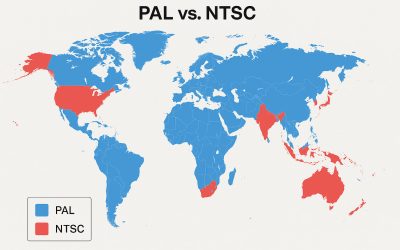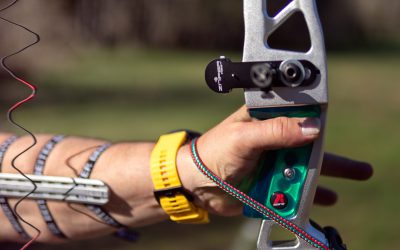”There comes a time in every photographer’s journey when a tool becomes a weight. Not just in grams, but in spirit. That time, for me, was now.”
I have been photographing professionally since 1989 – which means I’ve seen more camera systems come and go than most YouTubers have had hot dinners. I’ve worked through the film era, embraced digital when it matured, and stayed with Nikon loyally through it all. The D850? A masterpiece. Its 46.5 megapixels and stunning optics could slice reality into diamonds. But even masterpieces can overstay their welcome.
The reason I switched to the Sony A6700 was, quite literally, weight. The Nikon D850, although exceptional, is a brick. A glorious, precise, beautiful brick – but a brick nonetheless. And while its photographic capabilities are top-tier, its video features were beginning to feel… well, vintage. My work involves interviews, training videos, practical shoots where autofocus and modern codecs are not optional. The D850 simply couldn’t keep up.
And let’s be honest: I was never actually using all 46.5 megapixels. Most of my delivered images are exported at a maximum width of 2500 pixels. That’s around 6 megapixels. So what, exactly, was I dragging around all that sensor for?
The Divorce
Switching camera systems after decades is not a transaction – it’s a separation. It was terrifying. I paced, I doubted, I called friends like a man having a midlife crisis in a camera store. “Am I mad?” I asked. “Am I really going down in resolution? From full-frame to APS-C? As a professional?”
Yes. I was. And it was painful. The D850 was a divorce. A clean one, in the end – I sold everything Nikon in one go. No lenses left on the shelf to whisper temptations. Just a blank page, and a new pen.
First Impressions
When I first held the Sony A6700, I felt two things at once: “Is this a toy?” and, five seconds later, “This toy is magnificent.” It’s small, lightweight, and beautifully built. The Sigma 18–50mm f/2.8 paired with it like butter to toast. The shutter sound? Subtle, confident, professional. I hadn’t expected to be charmed – but I was.
It felt like having a pocket sketchbook instead of a studio canvas. Suddenly, the act of taking the camera out didn’t feel like a commitment. It felt like an invitation.
My Thoughts on the Tech Talk
Now, let’s address the herd of pixel-peeping elephants in the room.
YouTube is full of reviews declaring the A6700 a great beginner’s camera. Let me be frank: that’s nonsense. This is not an entry-level device. It’s powerful, complex, and not particularly forgiving. And what beginner is dropping 18,000 SEK on a camera body alone?
Then there’s the Full Frame vs APS-C myth – that crop sensors are inherently inferior. People quote statistics like scripture, but they rarely stop to actually understand them. For instance: yes, larger pixels can collect more light. But the Sony A7R IV has a 61MP full-frame sensor. Switch it to APS-C mode and guess what resolution you get? 26MP. Precisely the same as the A6700. Same pixel size. Same logic.
Don’t even get me started on the “1080p is amateur, 4K is pro” nonsense. Countless high-end productions are still shot in Full HD – including documentaries, TV shows, and commercial films. Resolution doesn’t make a story better. It just gives your editing laptop more work.

Photographed in the studio where I worked as an assistant to commercial photographer Janco Almgren. My little brother, 14 at the time, playing police. Shot in 1989, on film. The tools were serious – the moment, playful.
What Actually Matters
Photography – and filmmaking – isn’t about specs. It’s about story, emotion, timing. It’s about the little twitch in someone’s eyebrow when they realise they’ve just hit the bullseye. It’s about feeling, not format.
And yes, while we’re on the subject: never forget your memory cards. Trust me. No amount of megapixels will compensate for that particular lesson.
The Road Ahead
I’ve switched my editing tools too – from Capture One and Photoshop to Darktable and Affinity Photo. I’m tired of overpriced subscriptions. I’m also moving from Final Cut Pro to DaVinci Resolve. It’s industry standard, platform-independent, and a breath of fresh air.
This new setup – Sony, Sigma, Affinity, Resolve – feels liberating. And APS-C lenses? They cost about a third of their full-frame counterparts. I find myself browsing gear again, not with anxiety, but with curiosity. That, I hadn’t felt in years.
A Final Reflection – Tools Fade, Vision Endures
I’ve seen jaw-dropping photographs taken on battered Nikons, grainy Canons, and even film SLRs that had seen more sunsets than some YouTubers have had subscribers.
Remember The Blue Planet? The original 2001 series was filmed mostly on 16mm and SD video. Yet it captivated millions, not with resolution, but with revelation.
Out of Africa (1985), filmed on analog stock, brought Kenya’s landscapes to life in a way that still holds up on cinema screens today – haunting, golden, timeless.
Joe McNally? He made magic with a Nikon D2X – just 12 megapixels and an APS-C sensor – and his images still teach us how to see.
Jay Maisel walked the streets of New York with cameras long considered obsolete, yet his eye caught light and life like no autofocus algorithm ever could.
And Swedish photographer Mattias Klum brought wild, fragile ecosystems to the pages of National Geographic using tools that today wouldn’t make the “Top 10 Cameras of 2025” list.
These works endure not because of technical perfection, but because someone was there. Someone saw. Someone cared.
Great gear helps. But it’s you – your eye, your patience, your timing, your willingness to wait for the wind to still or the light to hit – that makes the magic happen.
And so…
I didn’t switch cameras because I wanted better specs. I switched because I wanted better use. I wanted a tool that fits my hand, my workflow, and my life. The A6700 gives me that – and a little joy on top.
It’s not about stepping down. It’s about stepping into the next phase.
(The picture on the top: Photographed in our garden in 1989, on film. I was 16. No autofocus, no stabilisation – just patience, light, and a quiet September morning.)






0 kommentarer